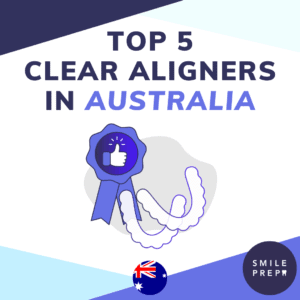
For decades, the only way to straighten your smile was to spend a year or more with metal braces fastened to your teeth. However, in the late 1990s, Invisalign changed everything by offering clear aligners as an alternative to braces. More recently, companies like SmileDirectClub started selling clear aligners for home applications, giving people an even more affordable and convenient method for correcting tooth alignment.
There are several options for in-office and at-home clear aligner treatment, and which one you prefer largely comes down to personal preference. However, there are also some clear-cut advantages and disadvantages to using certain clear aligner services. In this article, we’ll discuss the five best clear aligner companies in Australia to give you an overview of your best choices.
Table of Contents
At-Home vs. In-Office Aligners: What’s the Difference?
Before we get too far into this guide, we should probably discuss the distinguishing factors separating home alignment and traditional in-office options. First off, you might notice that the aligners usually look very similar. In fact, it’s unlikely that you’d be able to tell the difference between a clear aligner produced for home application and one manufactured for in-office treatment.
With in-office aligners, you’ll need to make regular visits to your dentist or orthodontist’s office, which allows them to monitor your alignment progress and make any adjustments you might need. They can also apply attachments to your teeth to encourage more significant shifts that your clear aligners can’t make on their own.
Regarding at-home aligners, you’ll provide your chosen company with high-quality impressions or scans of your teeth so they can determine if you’re a good candidate for their services and produce a preview image of your finished smile. Then, they’ll ship your aligners directly to your front door. From that point on, all you need to do is wear your aligners according to the schedule they send you.
Best At-Home Clear Aligners
Would you rather not have to visit your dental professional in person once a month? Do you want a faster alignment than any in-office option can offer? Would you prefer to save thousands of dollars while aligning your teeth at home? If this sounds like you, an at-home clear aligner company might be the right choice for your needs.
These companies can usually only treat mild-to-moderate cases of crowding and spacing, and they lack the customization that comes with in-office treatment. There are quite a few ways in which these companies differ from each other as well, so let’s dive into the details and see which ones are your best options.
Byte: Best At-Home Aligners
Is efficiency your top priority? If so, Byte might be the right choice for you. Thanks to their proprietary HyperByte device, Byte has an average treatment plan length of 4–5 months. This is just the tip of the iceberg for Byte, as they also offer quality customer support and generous treatment guarantees. However, Byte’s pricing is higher than most at-home alignment companies.
Pros
- With daily use, the HyperByte device can safely expedite tooth shifts and increase overall comfort. Just lightly bite down on this device five minutes a day, and its micro pulses will encourage shorter treatment lengths and a more comfortable aligner fit.
- With the Byte for Life Guarantee, Byte promises that you’ll love your smile for life. Even if your teeth shift many years from now, they will work with you to achieve the results of your original treatment preview at no extra cost. This industry isn’t exactly known for strong guarantees, making this offer from Byte even more valuable.
- If you don’t want to wear your aligners for 22 hours per day, Byte offers a nighttime-only alignment plan that only requires ten hours of continuous daily wear. While this does extend your alignment schedule to 5–6 months (and increases your price point to $3,399), it can be worth it if you don’t want to wear clear aligners all day, every day.
- Byte has outstanding customer support, far outpacing their competitors in the at-home aligner industry. Byte’s representatives are courteous and knowledgeable, and while they can’t replace the expertise of an in-person visit with a dental professional, it’s better than most home alignment companies have to offer.
- Byte’s sticker price is pretty high (more on this in a moment), but they do include a set of retainers, the HyperByte device, and a whitening kit to add some more bang for your buck.
Cons
- Byte has some of the highest prices in Australia for at-home teeth alignment. While SmileDirectClub has slightly higher rates, Byte is one of the more expensive home teeth aligner companies we reviewed.
- Some competitors have retail locations where Australians can get their teeth professionally scanned. However, Byte doesn’t, so customers must complete an at-home impression kit, which some people find to be a messy hassle.
Byte - The Bottom Line
While Byte’s prices are higher than nearly every competitor in the at-home aligner industry, they’re still considerably cheaper than an in-office alignment. Their incredible efficiency, impressive guarantee, and high-quality customer feedback combine to make Byte well worth the cost. They are our top pick for at-home teeth alignment in Australia.
EZ Smile: Best Budget Aligners
EZ Smile has a lower sticker price than Byte, and some other features we appreciate as well. They have an excellent money-back guarantee that’s far superior to most refund policies in this industry, and they offer in-office teeth scans if you’d rather not use a DIY mold kit.
Pro
- At $2,499, EZ Smile is hundreds of dollars cheaper than some competitors, and thousands of dollars more affordable than an in-office treatment.
- Even though their sticker price is relatively low, EZ Smile still includes your first set of aftercare retainers for free.
- EZ Smile partners with 13 dental offices across Australia to make it as convenient as possible for customers to get professional teeth scans if they would rather not complete an impression kit at home.
- EZ Smile’s 90-day guarantee is a stellar refund policy, especially compared to most competitors. They give you three full months to analyze your progress. If you’re unhappy with your experience at any point in your first 90 days, they will refund your money minus a $300 planning fee.
- EZ Smile has hundreds of customer reviews available online, and most of them are positive.
- EZ Smile has a few payment plans available, including those without a down payment and those without credit checks.
Cons
- EZ Smile only offers all-day alignments. If you want a nighttime alignment plan, you’ll need to choose one of their competitors.
- Unlike some other at-home aligner companies, EZ Smile doesn’t require virtual check-ins to monitor your progress beyond sending in some photos at the midway point.
SmileDirectClub: Most Convenient
SmileDirectClub might have a higher price tag than their competitors, but they have a lot going for them. For starters, SmileDirectClub has served over 1.5 million customers since their 2014 inception — making them the most experienced remote provider by far. Not only that, SmileDirectClub makes treatment as convenient as possible, thanks to retail locations, nighttime only treatment, and comprehensive guarantees.
Pros
- Like EZ Smile, SmileDirectClub offers retail locations where you can get a professional teeth scan to begin your treatment. Best of all, a scan at a SmileShop is completely free.
- SmileDirectClub has two types of treatment: Clear Aligners, which require 22 hours of daily wear; or Nighttime Clear Aligners, which require just 10 consecutive hours of daily wear. This nighttime only option offers convenience and flexibility for busy adults who may not want to worry about their aligners during the day.
- SmileDirectClub offers a lifetime guarantee on your smile. If your teeth ever shift after treatment — even years down the road — SmileDirectClub will provide you with the aligners you need to realign your smile. To remain eligible, be sure to stay on top of wearing and replacing your aftercare retainers.
- SmileDirectClub offers a 30-day refund on your aligner package. Not only that, but with SmileDirectClub, you’re eligible for prorated refunds all throughout your treatment. Of course the longer you wait, the less money you’ll have refunded, but if you’re prone to cold feet, this policy might offer you some peace of mind.
- If you follow your treatment guidelines, SmileDirectClub will supply you with all the aligners you need to achieve the smile you’re after. Even if that means more aligners than were originally outlined in your treatment plan. Some providers charge high fees for these additional aligners, but SmileDirectClub includes them for free.
Cons
- At $2,965, SmileDirectClub is on the higher end of the home aligner price spectrum. Not only is their sticker price high, you’ll also need to pay $167 extra for aftercare retainers when treatment concludes.
- Though they receive plenty of glowing reviews, SmileDirectClub also gets their fair share of critical feedback. They went through rapid growth in 2017 and their team couldn’t quite keep up. We’re confident in the changes and progress they’ve made since then, but they still get more mixed feedback than other providers we cover.
SmileDirectClub - The Bottom Line
SmileDirectClub offers more experience than any of their competitors, but they have more advantages than just a long list of customers served. Their retail locations, nighttime only treatment, and lifetime guarantee make SmileDirectClub a highly convenient remote treatment option.
Best In-Office Clear Aligners
If you have a severe bite misalignment, it’s likely that in-office alignment will be your only option. For the most part, at-home aligners can only correct minor instances of crowding and spacing. Additionally, some people are simply more comfortable using an in-office option.
There are negatives to traditional orthodontics, of course. In-office alignments are almost always more expensive than their at-home counterparts, and if you don’t have time to make frequent visits to your dentist, it can be highly inconvenient as well.
Taking these factors into account, here are the two best in-office clear aligner companies available in Australia.
Invisalign: Most Experienced
Invisalign is a true pioneer in this industry, as they were the first company to manufacture clear aligners. They’ve straightened millions of smiles around the world, and they’re the most experienced clear aligner company available. Let’s take a look at some crucial advantages and disadvantages to Invisalign’s offering.
Pros
- If experience is important to you, there is no better option for teeth alignment. Invisalign is Australia’s most accomplished teeth alignment company, and it’s not particularly close.
- In terms of effectiveness, Invisalign’s clear aligner treatment is every bit as reliable as braces in nearly all cases. Invisalign can correct many severe alignment issues, like a significant overbite, underbite, or crossbite. Most of their competitors can’t say the same.
- Thanks to Invisalign’s “SmartForce” attachments, your dentist or orthodontist can enhance treatment to encourage more significant shifts than competitors.
Cons
- If cost is a priority, you will likely not be interested in Invisalign. While their prices can vary quite a bit depending on the exact nature of your alignment issues, Invisalign typically runs at least $4,500 and can be as expensive as $9,000.
- As with any in-office treatment, Invisalign requires regular visits to your dentist or orthodontist. At-home aligner companies are typically much more convenient because these frequent office visits aren’t necessary.
- With Invisalign, you can expect your alignment to take at least a year, and possibly as long as 24 months. This is a significantly longer timeframe than any at-home competitor offers.
ClearCorrect: Best In-Office Invisalign Alternative
ClearCorrect is the other major company offering in-office clear aligner treatment in Australia. ClearCorrect was founded in 2006, and they provide similar aligners to Invisalign. However, in many cases, ClearCorrect can straighten your teeth more affordably. Let’s see how ClearCorrect compares to Invisalign in other areas.
Pros
- Because ClearCorrect doesn’t charge dentists as much for their aligners and laboratory costs, their system is often considerably cheaper than Invisalign.
- Like Invisalign, ClearCorrect can add attachments to help their aligners shift your teeth. These small, tooth-colored “engagers” act like small handles that assist the clear aligners when grabbing onto your teeth.
- While ClearCorrect doesn’t have as much experience as Invisalign, they still have a longer track record than any at-home competitor.
Cons
- Similar to Invisalign, ClearCorrect treatment typically takes at least a year, which is a much longer time commitment than most at-home aligner companies require.
- Their prices are usually lower than Invisalign’s, but they’re still much higher than most at-home alignment processes.
- ClearCorrect requires just as much time in your dentist or orthodontist’s office as Invisalign does.
Other Clear Aligners Worth Considering
There are quite a few companies offering clear aligners in Australia today, and just because a company didn’t land a spot in our top five doesn’t mean they’re not worth taking a look at. In this section, we’ll briefly touch on some honorable mentions that came close to making this list but fell just short.
SmilePath: $1,899
At $1,899, SmilePath has the most affordable pricing in the Australian at-home clear aligner industry. But don’t let their low prices fool you; SmilePath still offers quality and effective clear aligner treatment. Plus, they throw in a free set of aftercare retainers, for which some providers charge extra.
SmilePath offers nighttime only treatment that only requires 10 hours of daily aligner wear. So if you’re worried about adhering to a 22 hour a day schedule, they’ve got you covered. SmilePath may not have as many advanced features as some of their competitors, but it’s awfully hard to complain about prices this low.
Orthocaps: $1,800-$7,000
Orthocaps are an in-office alternative to Invisalign and ClearCorrect. Their prices vary considerably based on the nature of your alignment issues, but for the most part, they offer lower rates than either Invisalign or ClearCorrect. Orthocaps claims they can produce better results than other in-office alternatives thanks to their specially designed day and night aligners, made of different materials to maximize your progress at all times of the day.
Orthocaps is based in Germany but they partner with several Australian dentists. They also have an Australian distribution deal with AB Orthodontics, a Melbourne-based medical equipment and supply company. Orthocaps doesn’t have as much experience as Invisalign or ClearCorrect, but if you’re interested in an in-office alignment, they’re worth considering.
How Should I Evaluate My Options?
Pricing always matters! However, it isn’t everything. In fact, our favorite choice for at-home alignment (Byte) is one of the most expensive options available for home aligners.
That’s why we like to evaluate each company on five key factors: affordability, effectiveness, convenience, appearance, and patient experience. When making your choice, try not to become too focused on any one of these aspects. Instead, examine the full picture of each company before making a purchase. The best providers score high marks in all five areas, not just one.
So, which companies excel the most in each category?
- Most Effective: Invisalign and Byte
- Most Affordable: EZ Smile
- Most Convenient: SmileDirectClub and EZ Smile
- Best Appearance: Invisalign and SmileDirectClub
Everyone has their own priorities when it comes to teeth straightening services, but you should always look for the company that offers the most well-rounded treatments that match your needs.
Final Thoughts
No matter what your goals are, or the exact nature of your alignment issues, we’re confident you’ll find the right company for you in this guide. The five companies profiled in this article are all highly reputable, and they can align your teeth efficiently and affordably. Best of all, none of them require you to use obtrusive metal braces!
Don’t just trust our opinion, though! This guide is merely a jumping-off point for you to discover which of these great companies best suits your goals. By evaluating each company on our five key factors of affordability, effectiveness, convenience, appearance, and patient experience, you can find the best fit for your unique priorities.
Frequently Asked Questions
What is the cheapest Invisalign alternative?
SmilePath and OrthoCaps are the two cheapest Invisalign alternatives. However, it should be noted that the price of OrthoCaps can fluctuate while the cost of SmilePath is fixed.
What is the most convenient clear aligner system?
In our estimate, any of the at-home aligner companies will offer incredible convenience, but EZ Smile and SmileDirectClub have an edge on the competition due to their in-person locations.
What’s the difference between Invisalign and home aligners?
There are two primary differences: cost and effectiveness. When looking at cost, at-home aligners come out the winner, saving users thousands of dollars over the course of treatment. However, in terms of effectiveness, in-office treatments are better able to address a wide variety of conditions.
Do at-home aligners work?
Yes, at-home aligners do work, but the conditions they can treat are limited to cosmetic issues related to spacing and crowding.
Which clear aligners work the fastest?
Thanks to their proprietary HyperByte device, Byte can offer 4–5 month treatment plans.
Are clear aligner financing plans available?
Most at-home clear aligner companies offer either financing or payment plans. If you choose in-office treatment, you might be able to get financing through your doctor.
Which clear aligners are the least noticeable?
Both Invisalign and SmileDirectClub use frosted translucent aligners with textured surfaces. This allows them to blend in with the natural teeth.
How long does treatment take?
This depends on the system you choose, how severe your orthodontic abnormalities are, and if you follow treatment guidelines. Most at-home treatments take about 6 months to achieve final results while in-office alignment takes around 18.
How do I get started with home aligners?
Start by visiting the website of the provider you are interested in. They will give instructions on what you need to do to get started with their system.
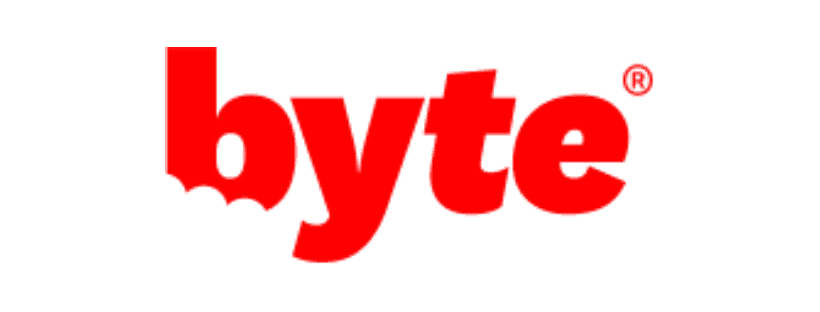
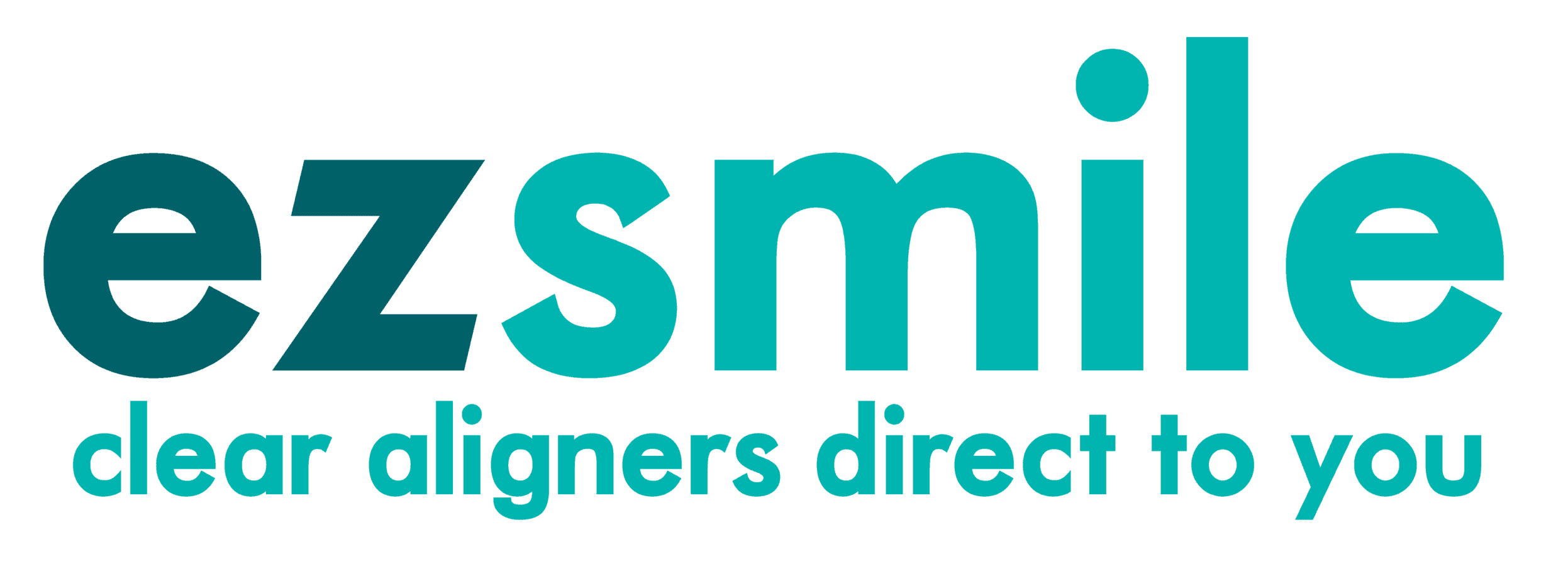
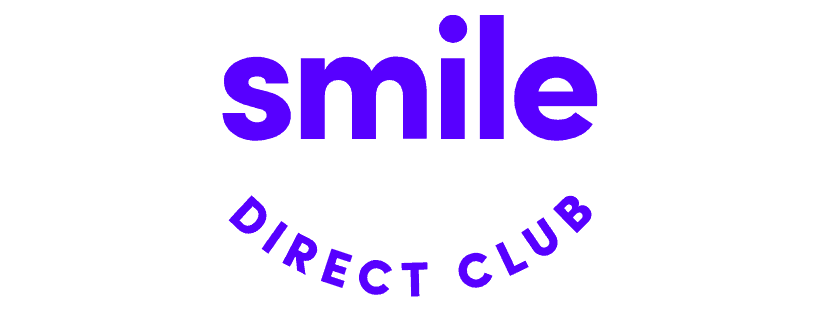
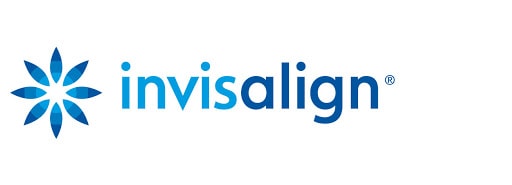
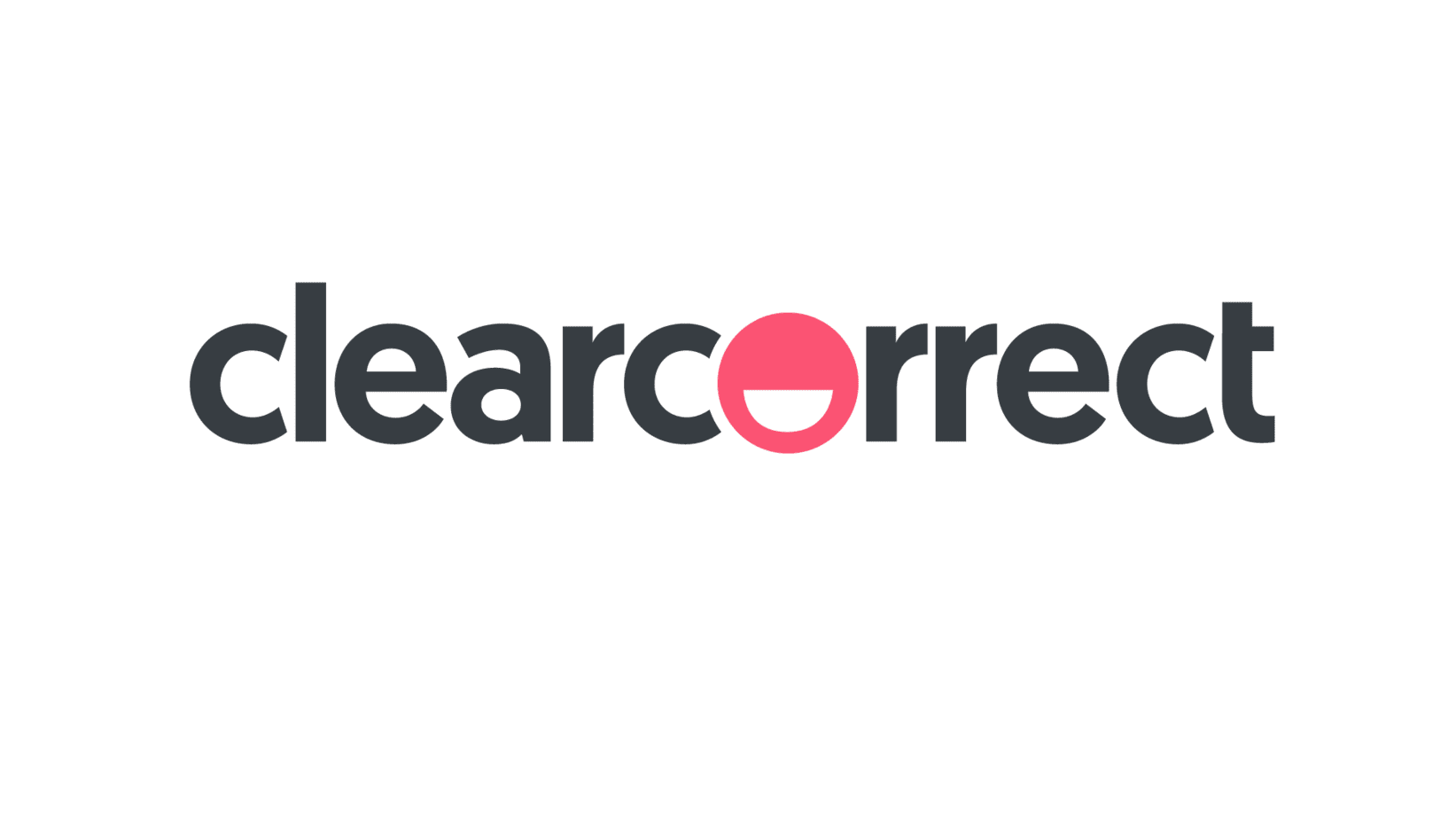
Join The Discussion: